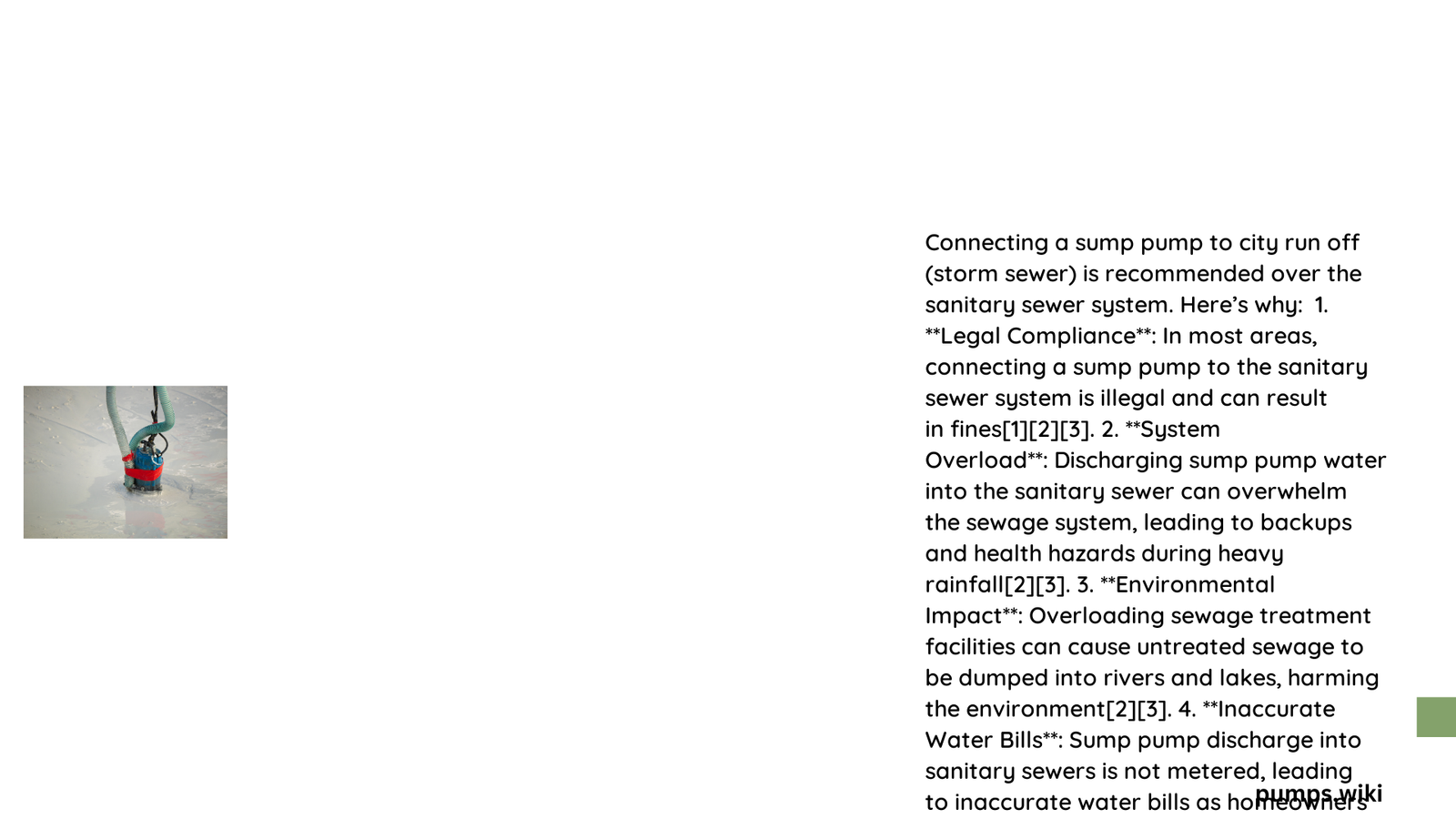Homeowners seeking to connect sump pumps to city run off systems face strict municipal regulations that generally prohibit direct sanitary sewer connections. Understanding these guidelines is crucial to prevent potential fines, environmental damage, and infrastructure strain. This comprehensive guide explores the technical, legal, and practical aspects of sump pump discharge management.
What Are the Legal Restrictions for Sump Pump Connections?
Municipalities universally discourage and often strictly prohibit connecting sump pumps directly to sanitary sewer systems. These restrictions exist to prevent several critical issues:
- Infrastructure Overload: Groundwater can overwhelm treatment facilities
- Environmental Contamination: Untreated water may enter water systems
- Treatment Cost Increases: Additional water processing strains municipal resources
Why Can’t Sump Pumps Connect Directly to City Systems?
| Restriction Type | Specific Limitation | Potential Consequence |
|---|---|---|
| Regulatory | Sanitary Sewer Prohibition | $300 Daily Fines |
| Environmental | Groundwater Discharge | Ecosystem Disruption |
| Infrastructure | Treatment Capacity | System Performance Reduction |
What Alternative Discharge Methods Exist?

Homeowners have multiple legal and effective sump pump discharge options:
- Lawn Drainage
- Direct water onto landscaped areas
- Ensure proper grading away from foundation
-
Maintain minimum 10-foot distance from property lines
-
Storm Drain Connections
- Consult local municipal guidelines
- Obtain necessary permissions
-
Install appropriate drainage infrastructure
-
Dry Well Installation
- Create underground water dispersal system
- Prevents surface water accumulation
- Requires professional engineering assessment
How to Ensure Proper Sump Pump Discharge?
Successful sump pump management requires strategic planning:
- Conduct Site Assessment: Evaluate property topography
- Understand Local Regulations: Contact municipal water management department
- Professional Consultation: Engage licensed plumbing professionals
- Regular Maintenance: Inspect discharge systems annually
Technical Considerations for Effective Discharge
Proper sump pump discharge involves multiple technical factors:
- Pipe Material: Recommend UV-resistant PVC or flexible polyethylene
- Pipe Diameter: Minimum 1.5-inch diameter for adequate flow
- Slope Gradient: Minimum 2% downward slope for gravity-assisted drainage
- Backflow Prevention: Install check valves to prevent water return
What Are the Potential Risks of Improper Connection?
Unauthorized sump pump connections can lead to:
- Substantial municipal fines
- Potential property damage
- Environmental contamination
- Legal liability
Recommended Best Practices
- Always prioritize municipal guidelines
- Invest in professional installation
- Maintain comprehensive documentation
- Conduct periodic system inspections
- Stay informed about local water management regulations
Cost Implications
Proper sump pump discharge typically involves:
– Professional assessment: $200-$500
– Drainage system installation: $1,000-$5,000
– Annual maintenance: $100-$300
Conclusion
Connecting sump pumps to city run off systems requires careful navigation of legal, technical, and environmental considerations. Homeowners must prioritize compliant, efficient water management strategies that protect both personal property and municipal infrastructure.
